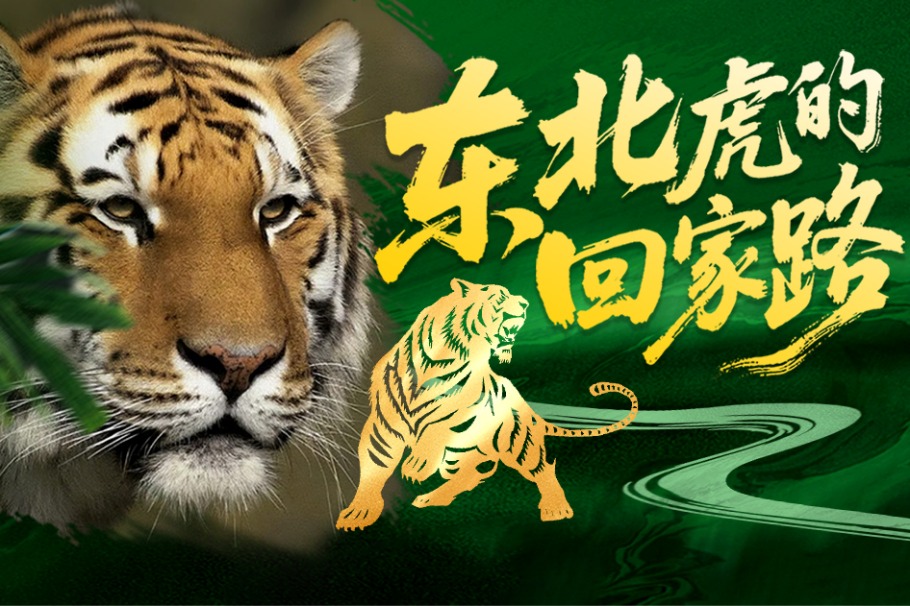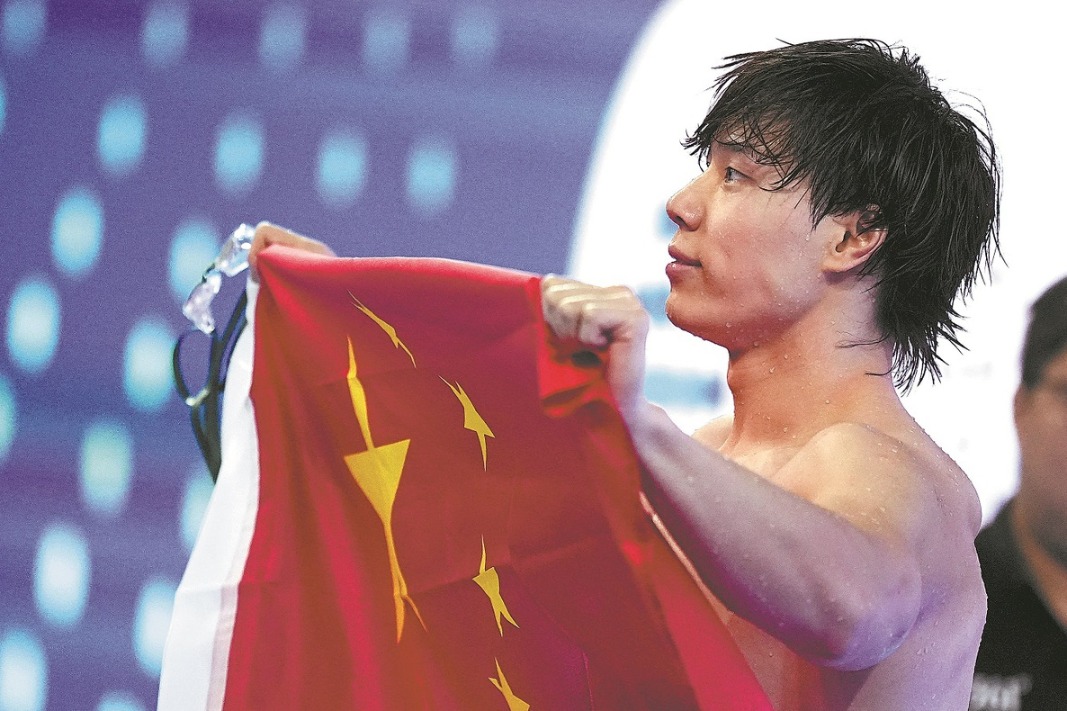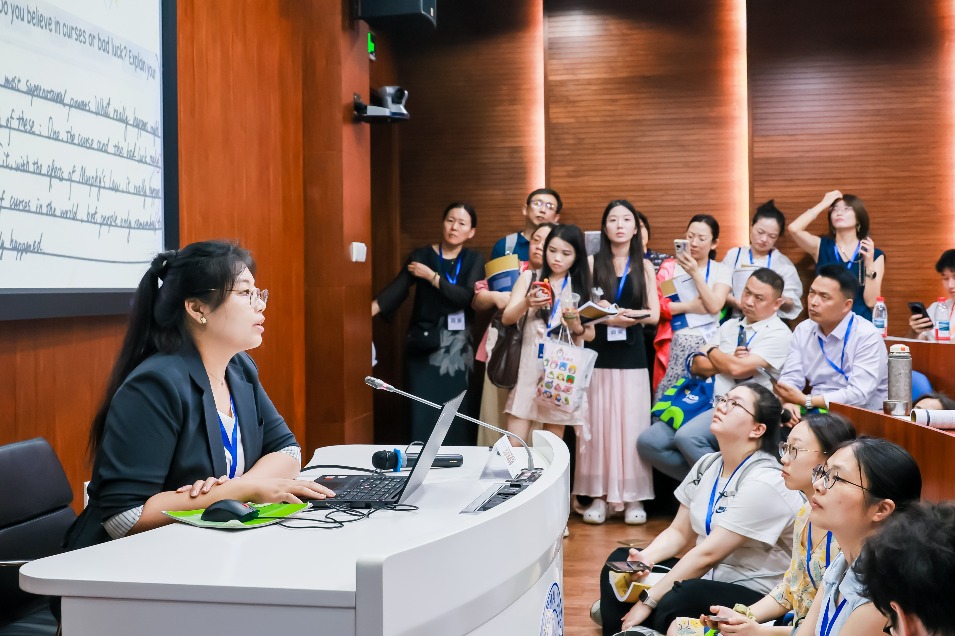Stitching together tradition with modernity
Master of embroidery shows how a delicate touch can create works that will last, Yang Feiyue reports.

Under a magnifying glass, more than 100 Chinese characters of shou (longevity) in different fonts manage to set themselves clearly apart from one another on a cloth the size of a match box.
They were all embroidered by Zhao Hongyu, 66, stitch by stitch on the tiny cloth, forming a part of her masterpiece Baishoutu (Hundred Longevity Painting), which features a benevolent-looking man in his advanced years and such auspicious patterns as peaches and deer.
Zhao astounded many people in 1982 when she completed the piece. Its patterns were embroidered on both the front and back and looked exactly the same.
It was widely considered an innovation of Wuxi fine embroidery, which had traditionally been done on just one side.
A branch of Su embroidery originating from East China's Jiangsu province, the art from Wuxi, at the southern part of the province, boasts a history of more than 2,000 years and was listed as a national intangible cultural heritage in 2008.
The art form distinguishes itself through its intricate utilization of needlework, thread, fabric and color, demanding elevated technical proficiency and introducing additional layers of complexity.
"Silk thread for this exquisite embroidery can be split into as many as 70 or 80 strands, making for a vivid expression of delicate details," says Zhao, who was recognized as a national inheritor in 2009.
From minuscule figures and horses the size of a bean to characters as diminutive as a fly's footprint, every intricacy hinges on the flawless synchronization of the artisan's hands, eyes and heart to attain perfection, she adds.
As the stitches securing the thread ends are meticulously woven into the needlework, the outcome remains impeccable even under magnification.
"A well-crafted piece should be admired both from a distance and up close," Zhao says.
The artisan has never failed to draw gasps of amazement from crowds whenever she pulls out a strand of silk around 1 millimeter in diameter and then splits it into half, quarter and even more parts for her embroidery work.
Before getting into the action, Zhao cautions that one should have their fingernails trimmed carefully to avoid catching and tearing the delicate silk.
Then, various stitching methods are applied, with the neat stitching mostly creating smooth lines, gradient stitching used for natural elements featuring transitioning hues, and layer stitching for facial expressions or furs that require more dimension.
Other stitching types, such as thickening stitching, are sometimes applied to deliver a more dense and voluminous effect in the design of rolling clouds or animal tails.
"The most challenging part is facial detailing," Zhao notes, adding that it is intricate because the expressions through curved eyebrows and the eyes need to be crafted meticulously through multiple stitches.
In most cases, facial detailing consists of strands that are as thin as one 70th or one 80th of a silk thread.
"This meticulous approach results in embroidery that is richly colored and highly three-dimensional, inviting viewers to appreciate every fine detail," she adds.
Innovative exploration
Wuxi has long been known for its silk production. Local embroidery flourished during the Ming (1368-1644) and Qing (1644-1911) dynasties.
"Back then, most people mastered embroidery techniques as a way to pursue the beauty of life," Zhao says.
After graduating from middle school in the 1970s, Zhao joined the Wuxi embroidery factory. Thanks to her quick learning and grasp of essential skills, she was sent to the now-defunct Wuxi arts and crafts research institute, where she began specializing in the research and creation of local embroidery.
Yet, as industrialization advanced around the 1990s, traditional handicrafts like Wuxi embroidery began to decline.
Zhao says she and her colleagues went through a dark time after the market economy took hold, since manual work faced significant challenges from mechanization.
"At the worst of times, I even considered switching careers, but I couldn't bear to leave," she says.
She then tried to evolve Wuxi embroidery in the wave of social progress, from refining the traditional craft to using new materials and aesthetic standards.
Her bold innovation won recognition. Embroidering luminous diodes onto phoenix tail feathers and a female crown with a fine copper wire cleverly stitched in between earned her multiple prizes, including the Baihua award, one of the country's most prestigious honors in the field of arts and crafts, in 1990.
Although it was a meaningful advancement in her trade, Zhao later abandoned the light technique in her works after some reflection.
"The art is meant to be beautiful and tranquil, never ostentatious. So, I decided to return to the gentle elegance of Wuxi embroidery," she explains.
This episode deepened her understanding of innovation, guaranteeing that her creations continue to be grounded in the tradition of Wuxi embroidery.
In 2005, Zhao opened a workshop and began recruiting apprentices to help carry forward the embroidery art.
Over the years, she has never stopped exploring, learning and perfecting her craft.
"At its core, embroidery techniques are universal. What you truly embroider in the end are deeper meanings, personal refinement, and vision," Zhao says.
In her eyes, the intricate, subtle elegance of Wuxi fine embroidery aligns seamlessly with the gentle spirit of Jiangnan, the southern region of the lower reaches of Yangtze River.
Growing popularity
The rising public enthusiasm for traditional cultural products in recent years has seen the creations by Zhao and her apprentices hotly sought after in the market.
Shen Yulan from Wuxi has been following Zhao in crafting the fine embroidery since 2008.
"I took a shine to its delicacy the moment I laid my eyes on it," recalls Shen, in her 30s.
Already something of a deft hand in the trade, Shen says she still faces challenges in each new creation.
"Aside from a sense of freshness, creating a new work always poses difficulties, such as subtle hue transition and contrasting effects of real and abstract elements," she says.
Shen admits there is still a long way for her to navigate the microscopic world of needlework. "Fortunately, Zhao could always intervene when I was about to go astray," she says.
Zhao takes joy in the fact that the craft she has pursued all her life has seen a vigorous revival. She is often at the center of attention during various cultural events and exhibitions.
To date, she has nine apprentices and says she still feels obligated to promote the traditional art.
Decades of practice saw her realize that learning embroidery might not be too difficult, but without a deep sense of understanding, it's impossible to achieve truly remarkable work.
"Teachers can pass on techniques, but the quality of the embroidery depends on the artist's personal artistic refinement," Zhao says.
"Progressing from crafting to creating is a transformative journey every artisan must undertake. It is through relentless learning and innovation that we can elevate our traditional techniques, safeguarding them from the erosion of time and imbuing them with renewed vigor."

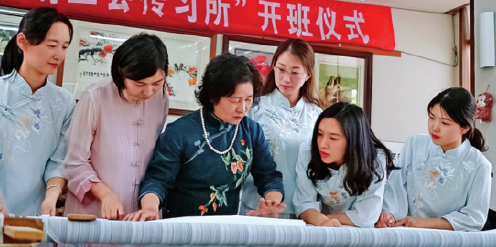
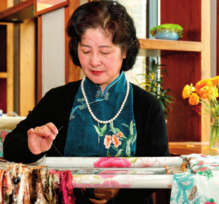
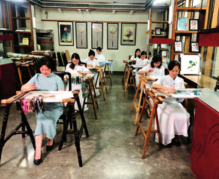
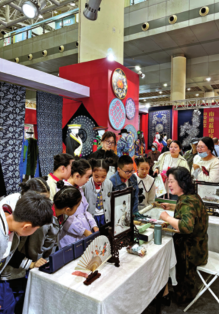
Today's Top News
- Thai army confirms ceasefire across all Thai-Cambodia border areas
- Nation's AI industry hailed as economic growth driver
- China launches national child subsidy program
- Xi urges all-out flood relief efforts
- UK asylum hotel protests spread to multiple cities
- Derailed German train 'probably hit landslide'


















